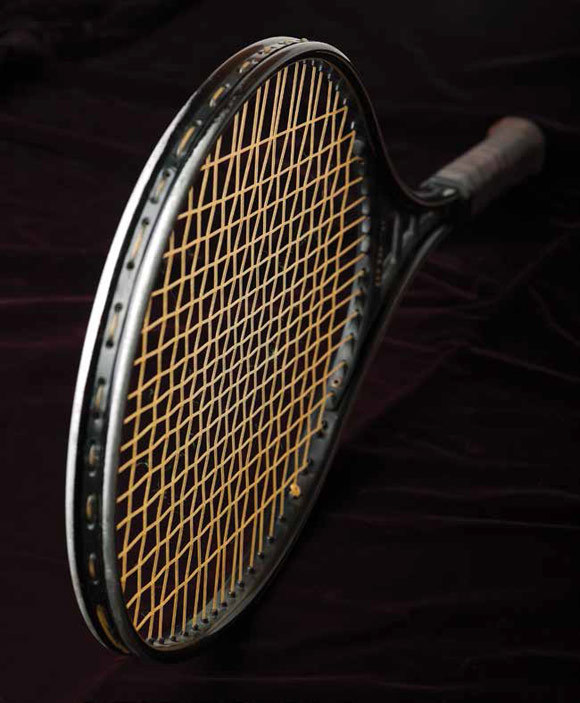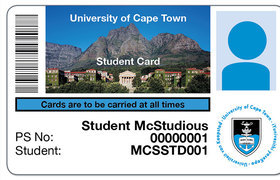Prince Pro
01 December 2014
Hedley Twidle, a senior lecturer in the Department of English, speaks of loss and objects lost.
When I was 18 and finishing school abroad, my father went (I think) a little crazy. He began giving away all our things. This is, perhaps, understandable behaviour when you are retrenched from a company you never liked anyway, and then move to the opposite side of the country. But still, the scale of the purge stunned me.
First, the record collection. My father was at Leeds University during the 1960s, and often let it slip that Clapton, Hendrix and The Who had played in the student union, that it was no big thing back then. He had all their albums, with that luxuriant amount of space the LP format affords for artwork. Roger Daltrey in a tub full of Heinz baked beans (The Who Sell Out) and Carole King just kicking back at home with her cat (Tapestry). The original of Sgt Pepper's Lonely Hearts Club Band itself, complete with cardboard insert epaulettes and moustaches that you could anchor in your nose via little tags. The naked, languorous women spread over the gatefold cover of Electric Ladyland – for a small boy on a mining town on the far West Rand in the dying days of apartheid, this was a formative document.
And when the needle came down, the low-end kick of these records on an analogue stereo: Eddie Cochran's Summertime Blues, Simon and Garfunkel's Cecilia. It sent me into paroxysms of excitement. In the other partition of the shelving: opera. Records that I wasn't allowed to touch, and then was (when older), but only after an elaborate ritual of cleaning the vinyl with a duster that picked up the motes via static as the record passed under it. Thick, hard-backed sets of Verdi, Puccini and Mozart that my father would play at top volume on New Year's Eve, wheeling the stereo outside to compete with the treffers issuing from across the road.
All of them he gave away, dumping them at a charity shop one morning in downtown Johannesburg. What diaspora have they formed, spread out through the greater city? Do you, dear arty reader, have my Electric Ladyland, my birthright?
But there are also the other, odder things, many of them related to the kitchen – that realm of experiments and transfigurations. When I visit other people's houses and see them using grandma's old rolling pin or mixing bowl, I think of a lettuce spinner that gave me endless amusement as a child, or an egg slicer with metal strings that one could play as a kind of lyre. Cutlery, chopping boards, baking moulds, bread bins – it all went.
Since 1998 there have been several more phases of ascetic purging, though less severe. A while back my father had the radio console actually removed from his car – 'because I don't need music when I drive anymore, I like just to think'. This endeared him to a Buddhist couple on the Garden Route (where he now lives) and they invited him to a retreat. But it is important to stress that he is in no way a hippie or New Age type – quite the opposite – and he left the temple in disgust when they tried to sell him loose-fitting garments and audiobooks about mindfulness. He keeps talking about renouncing all possessions and going to live in a fisherman's cottage up the West Coast.
What is intriguing, then, is what he decided to keep. My extensive LEGO collection, all compartmentalised according to colour in old ice-cream tubs. Fantasy novel cycles from my teens that should have been the first things to hit the charity shop. A series of placemats depicting scenes from a foxhunt in the English countryside. And most perplexing of all: a huge papier-mâchémodel of a padlock that I made in art class when I was ten years old. It sits up in a top shelf of the cupboard along with other school projects.
My father also gave away my mother's things. This is what I really set out to write, but find it difficult. Seven years after her death, virtually all I have is her tennis racket.
It is a Prince Pro, with a dark frame and a brown grip. Once, in the 1970s perhaps, it was cutting-edge, the era when my mother was wielding it from the baselines of the Rec Club (she was never much of a net player), dispatching her trademark cross-court slices. The grip seems to be the original, and is worn smooth like old wood by the serves and volleys, the ceaseless changing between forehand and backhand, rough or smooth, p or d.
The shape of it seems different to the chunky, oval power rackets of today. The surface area is generous, splaying open from the moulded plastic struts where prince is embossed. The top of the frame has been scuffed a great deal by hard gets on hard-surface courts, revealing the base material to be aluminium, silver below the dark paintwork in a band from 10 to 2. But the strings are in good condition, a healthy dental yellow that convinced me to try the racket out a while back.
This I regret: not because I lost the game, nor because it resulted in a structural crack low down on the PRO side. It is because, holding it up to the light now, I am reminded that tennis rackets retain small filaments of tennis ball where the strings cross. And if I hadn't played with it, those yellow strands caught in the net of gut would unquestionably have been from my mother's wily cross-court slice, which was something she still could do even when she was losing her memory, which was one of the last things.
Read other essays in Stephen Inggs' Object Relations collection - about Virgina MacKenny contemplating the significance of a glass of water, Mark Solms' last letter from his father, Andy Buffler's plastic scintillator (which glows when exposed to radiation), what a tennis racket means to Hedley Twidle, or Nick Shepherd encountering the box in which Sarah Baartman's remains were repatriated.
 This work is licensed under a Creative Commons Attribution-NoDerivatives 4.0 International License.
This work is licensed under a Creative Commons Attribution-NoDerivatives 4.0 International License.
Please view the republishing articles page for more information.










